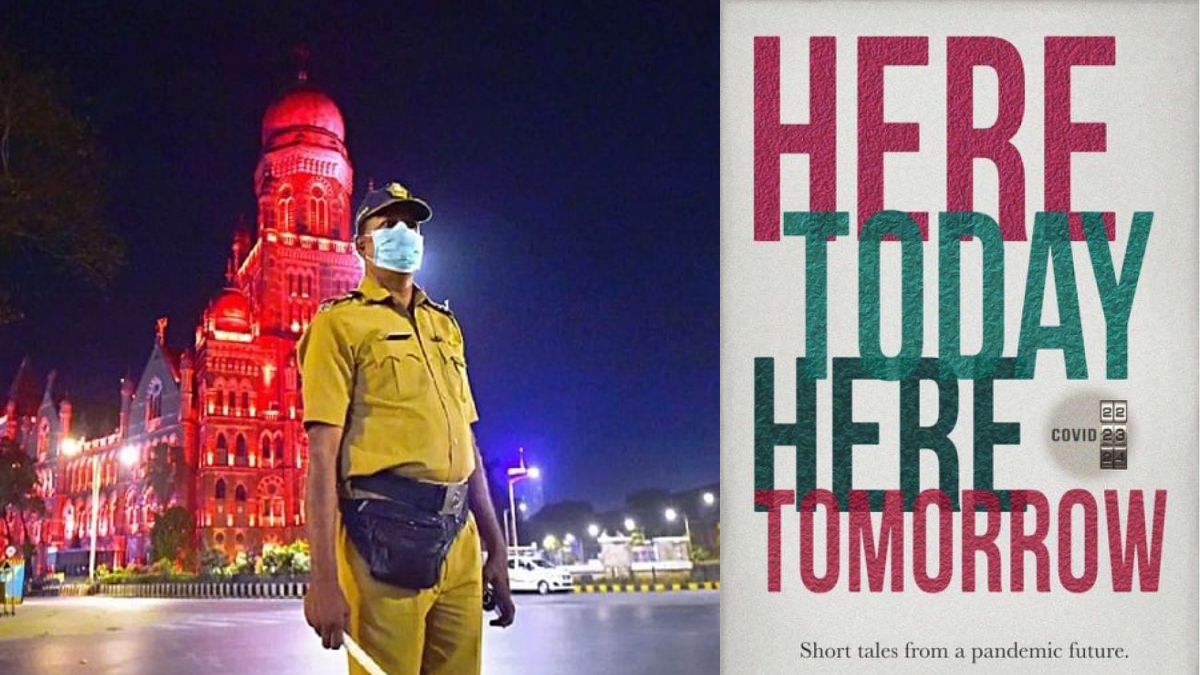


The book, Here Today, Here Tomorrow: Short Tales from a Pandemic Future, is a collection of short stories by Priyadarshini Narendra, Sanjeev Roy, Aiyana Menezes and Prabhakar Mundkur. Mythili Chandrasekar has penned the ‘Foreword’. The book encapsulates their fascinating take on possible alternative future outcomes.
It all began from a WhatsApp group that was formed sometime in April. The common thread was trying to make sense of the unfolding future and an interest in a method of strategy planning called ‘Scenario Planning’. Sanjeev elaborates, “I was quite keen to understand and use Scenario Planning. I felt it could help organisations make sense of the future. We gave the name Future Forward to this virtual group.”
Prabhakar suggested putting the future-predictions tool of scenario planning to use and the group wrote a highly acclaimed piece in June which appeared in a newspaper titled “As India unlocks, here are six ways our lives have changed forever”. From there, they decided upon exploring the short story format and talked about the future based on their assumptions.
Sanjeev asserts, “The health sector interested us as it had assumed such huge importance in our lives. Priyadarshini, one of the co-authors, suggested we write stories of alternative scenarios and all of us jumped at the idea.”
Priyadarshini says that she was struggling to grapple with the pandemic when it started. “In scenario planning, the possible futures are written up as narratives rather than PPTs, so we decided to springboard into writing short stories from alternate futures.”
Prabhakar was getting increasingly impatient and restless about the way people were thinking about the pandemic, he admits. “The future of what would happen to all of us I thought could be better predicted with a little imagination rather than based on case studies of other emergencies in the past. So we decided to write our assumptions about the future,” informs Prabhakar.
As a consumer behaviour enthusiast, Mythili was observing the change in people behaviour all around and listening to some conversations among brand custodians as well. She continues, “There was a lot of uncertainty and thus, confusion on how to plan long term. An opportunity to collaborate on scenario planning was the key push to participate.”
Talking about the Foreword, ‘Unmasked’, Mythili says, “I needed to lay out the contours of scenarios, capturing, and synopsising all-out discussions, the grids we worked out and the parameters. The areas of impact, the matter of the timeline and the matter of degree. The stories all pivot around these critical pillars. The Foreword sets the ground and the backdrop against which the stories play out.”
Prabhakar has penned “Sheena’s Good Deed” that depicts how doing a good deed may not always lead to a positive outcome but that should not stop people from helping others. Talking about it, he says, “What happens to Sheena is quite real. Kirti’s character shows the weakness of humans. When people are pushed beyond their level of tolerance, and it is a matter of survival, people sometimes change (but not always). Their characters can change for the moment, just to survive. It is a common human failing that is depicted in the short story.” When asked about whether Sheena should not have helped Kirti as she had to pay a heavy price for it. He replies, “We must continue being what we are. Sheena did the right thing. I believe that we must all help those less privileged than ourselves. What happened to Sheena is unfortunate. It does not mean that she must change her essential character because of one bad experience.”
Priyadarshini, who has written “Nirmala’s News” and informs us that it has a Covid cure woven in, as that is one of the possibilities in the future. Asked about how she views the loss of jobs once the pandemic is over which were created or given more importance due to Covid-19, Priyadarshini answers, “From everything experts are saying, Covid-19 is only one in a series of pandemics to follow. Given that, any sane society would create a systemic healthcare response to it rather than a jerky one-off. If that happens, then jobs are likely to be imagined from the perspective of long-term response and thus safe.”
In “Mrs Kumar’s Day of Remembrance”, Sanjeev has painted a picture where vaccines have been found, technology is making a lot possible but at the same time income inequality has increased opening the gap between rich and poor and there is a ubiquitous government. Some things remain as always, ‘jugaad’ being one of them. The story has certain elements which can be called futuristic including customised health pills, body scanners, weekly and daily logs. He elucidates, “There are some things that are certain, no matter what the scenario—one of them is the acceleration of technology adoption and innovation in multiple aspects of our lives. Along with it is the possibility of greater government control of private lives and healthcare is one such domain. Another possibility is that there is another virus attack in future, leading to people living more contactless lives. If you put these things together then you can begin to see the kind of possibilities that emerge in Kumar’s household in 2036.”
VR already exists and it is set to become more ubiquitous in some form. Sanjeev adds that with governments wanting to keep a tighter control on epidemic spreads and insurance companies wanting more here and now data, the need for regularly updated data will be there. Since diagnostics is the most creative area in healthcare and there is enormous innovation already underway, he saw regular diagnostics in places where they are needed (like homes), updated databases accessible to governments and insurance companies, healthcare systems all happening together. That is why the daily and weekly logs. “The customised pills are a wish that genetics and medicines will reach a level where medicines can be made for individual systems—the regular medical checks and updates will also help in that,” he anticipates.